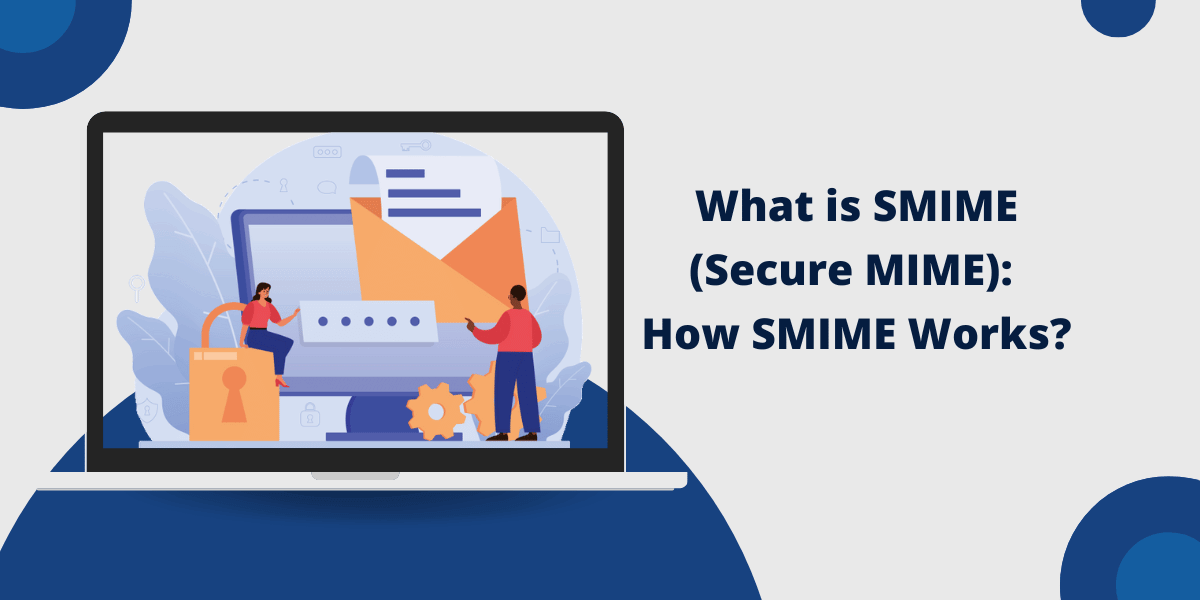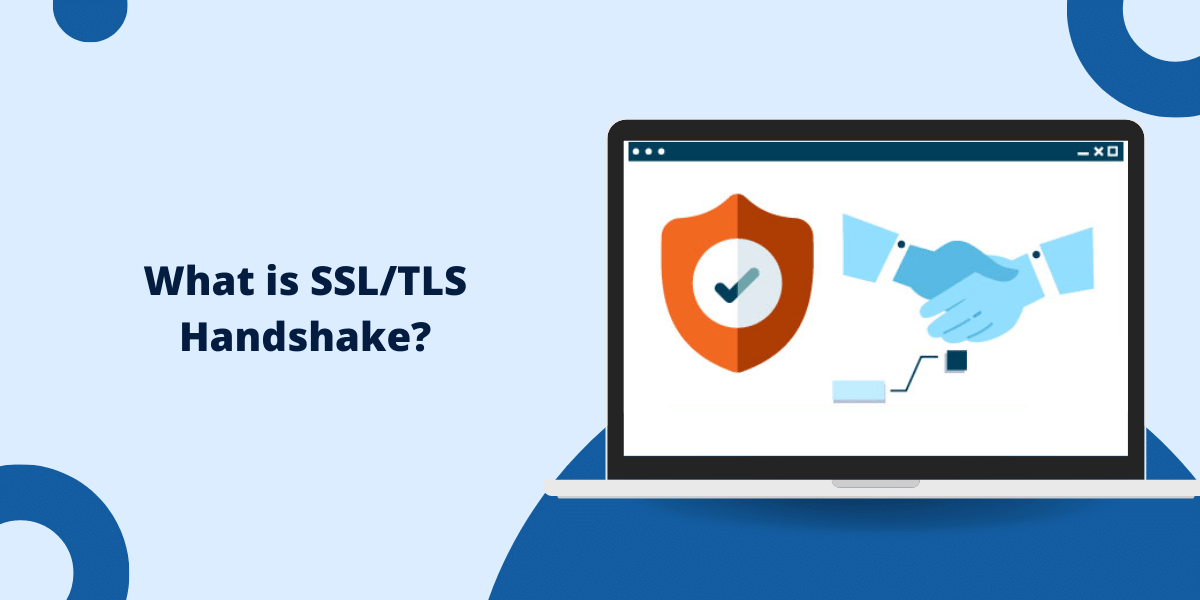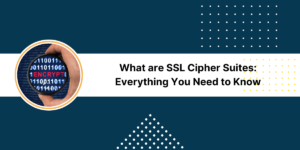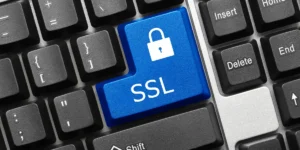What is Secure MIME (SMIME)?
SMIME (Secure MIME), also known as Secure/Multipurpose Internet Mail Extensions, is a protocol for securing email communications. It provides end-to-end encryption and digital signatures, ensuring the confidentiality, integrity, and authenticity of messages.
S/MIME uses public key cryptography to encrypt email content and attachments. It also allows senders to digitally sign messages digitally, verifying their identity to recipients. This helps prevent email spoofing and man-in-the-middle attacks.
Supported by most major email clients, S/MIME requires users to obtain and manage digital certificates. While it offers strong security, its adoption has been limited due to the complexity of certificate management and the need for both sender and recipient to support the protocol.
S/MIME is particularly valuable for organizations handling sensitive information, offering a standardized approach to email security.
Key Takeaways
- SMIME (Secure/Multipurpose Internet Mail Extensions) is a standard for public key cryptography, which digitally signs and encrypts email messages.
- It provides confidentiality, authentication, data integrity, and non-repudiation of email communication.
- SMIME extends the MIME (Multipurpose Internet Mail Extensions) standard to include cryptographic security services.
- It uses asymmetric cryptography, which uses public-private key pairs to encrypt and digitally sign messages.
- Encryption scrambles the message content so only the intended recipient can decrypt and read it.
- Digital signatures validate the authenticity and integrity of the sender and message content.
- Certificates issued by trusted Certificate Authorities (CA) validate the identity of the sender.
- SMIME is built into most modern email clients and servers, including Outlook, Gmail, Yahoo Mail, etc.
- Using SMIME requires obtaining digital certificates, enabling security features on email clients, and having recipients support SMIME.
How Does SMIME or Secure MIME Work?
SMIME enables two main security features for email:
- Encryption: To keep the message confidential so only the intended recipient can read it.
- Digital Signature: To authenticate the sender’s identity and validate the integrity of message content.
SMIME Encryption Process
- Obtain Certificates: The sender and recipient obtain public key certificates issued by a trusted CA, which verifies their identities.
- Exchange Public Keys: The sender gets the recipient’s public key from their certificate, and the recipient sends their public key certificate to the sender.
- Encrypt Message: The sender encrypts the message content using the recipient’s public key. Only the recipient’s private key can decrypt it.
- Send Encrypted Message: The sender sends the encrypted message over email. The message content is scrambled and unreadable during transit.
- Decrypt Message: Upon receiving the encrypted message, the recipient decrypts it using their private key, which they only possess. They are able to read the confidential message.
SMIME Digital Signature Process
- Obtain Certificate: The sender obtains a public key certificate issued by a trusted CA to validate their identity.
- Create Hash: The sender creates a hash or digest of the message content using a hashing algorithm.
- Encrypt Hash: The Sender encrypts the hash using their private key to sign the message digitally.
- Send Signed Message: Sender sends the email with the encrypted hash signature attached to the message.
- Decrypt Hash: Upon receiving the signed message, the recipient decrypts the hash using the sender’s public key from their certificate.
- Verify Hash: The recipient generates a new hash of the message content and compares it to the decrypted hash. If both hashes match, the message integrity is verified.
- Validate Sender: The sender’s certificate verifies their identity and authenticates them as the message author.
SMIME Components Explained
SMIME utilizes various standards, protocols, and components to provide email security:
- MIME: Multipurpose Internet Mail Extensions (MIME) is an internet standard that extends email to support text in character sets other than ASCII, non-text attachments, message bodies with multiple parts, and header data in non-ASCII character sets.
- Cryptographic Algorithms: SMIME uses symmetric encryption algorithms like AES, DES, 3DES, and RC2 to encrypt message contents. It also uses public key algorithms like RSA and DSA to digitally sign messages.
- Public Key Cryptography: The use of public-private key pairs enables SMIME encryption and signing functions. The sender uses the recipient’s public key to encrypt and their private key to sign.
- Hash Functions: Hash functions like SHA-1 and SHA-256 generate a unique digest or hash value of the message content for creating digital signatures.
- Digital Certificates: Public key certificates issued by a trusted CA are used to distribute public keys and validate user identities. Certificates establish trust between parties.
- Certificate Authorities (CA): CAs like Comodo, DigiCert, and GoDaddy verify user identities and issue digital certificates binding their identity to their public key.
- CRLs and OCSP: Certificate Revocation Lists (CRLs) and Online Certificate Status Protocol (OCSP) check the validity of certificates. Revoked certificates are added to CRLs.
Why Use SMIME for Email Security?
Here are some key reasons to use SMIME encryption and signing to secure your email communication:
- Confidentiality: Encryption prevents unauthorized access to message contents during transit or storage. Only the intended recipient can decrypt and read it.
- Authentication: Digital signatures validate the sender’s authenticity using their public key certificate issued by a trusted CA.
- Integrity: Any changes made to the signed message will invalidate the signature detected by the recipient, ensuring integrity.
- Non-Repudiation: Digital signatures prevent the sender from denying having sent the message since only their private key can produce the signature.
- Ease of Use: SMIME is built into most email clients and servers, making it easier to access for users than PGP encryption.
- Compliance: The use of SMIME and encryption meets regulatory compliance requirements for data security and privacy in sectors like healthcare and banking.
How to Set Up and Use SMIME Encryption & Signing
To utilize SMIME features for secure email, both sender and recipient must set up SMIME on their email clients or webmail service:
Obtain Digital Certificates
- Individual users can get personal SMIME certificates issued by a commercial or enterprise CA that will validate their identity.
- For company email, get SMIME certificates through your company’s PKI deployment or enterprise CA server, such as Microsoft AD CS.
- The certificates should be X.509 v3 based on supporting email addresses in the Subject Alternative Name extension.
- Make sure the Root and Intermediate CA certificates are installed on your devices and trusted.
Install Certificate on Email Client
- On your email client or webmail, go to settings and locate certificate management options.
- Import your SMIME certificate and private key, which the email client will store.
- Set the SMIME certificate as your default signing and encryption certificate.
Compose & Send SMIME Signed/Encrypted Email
- While composing a new email, select the SMIME encryption and digital signature option.
- For encryption, select the recipient SMIME certificates to encrypt the message when sending it.
- For signing, your SMIME certificate will be applied automatically to sign the message when sending it.
- The recipient’s email client will automatically decrypt or validate the signature upon receipt.
Read & Decrypt SMIME Protected Emails
- For encrypted emails, your email client will automatically use your stored private key to decrypt the message content upon receipt.
- For signed emails, your client will verify the signature by validating the sender’s certificate and checking the message’s integrity.
- If issues occur, check that all involved certificates are installed properly and not revoked.
SMIME vs. PGP Email Encryption
Both SMIME and PGP can provide email encryption but have some key differences:
- User Certificates: SMIME uses certificates from trusted CAs to validate user identities. PGP uses a web-of-trust model.
- Infrastructure: SMIME relies on PKI with CAs for key distribution. PGP is decentralized with key servers.
- Encryption Keys: SMIME uses the recipient’s public key for encryption. PGP uses a symmetric session key shared via public key encryption.
- Key Length: SMIME permits a longer 2048-bit key length for stronger encryption, while PGP typically uses shorter 1024-bit keys.
- Digital Signatures: SMIME uses public key cryptography for built-in signing. Signing is optional in PGP.
- Native Support: SMIME is built into most modern email clients and servers. PGP plugins or extensions are required.
- Metadata: SMIME provides message integrity, authentication, and non-repudiation. PGP focuses only on encryption.
Limitations & Challenges of Using SMIME
While SMIME solves many email security issues, it also comes with some limitations:
- Both sender and recipient must use SMIME-compatible email clients. Not all clients have full support.
- Parties must exchange SMIME certificates beforehand for encryption and signature verification.
- Encrypting message content increases its size substantially, which can cause delivery issues.
- Proper management of keys and certificates is required, including renewals and revocation checks.
- A centralized trust model is dependent on Certificate Authorities as a single point of failure and trust.
- No forward secrecy is provided for previously encrypted emails whose keys are later compromised.
- There is no protection against vulnerabilities like email, which exposes encrypted emails in specific cases.
Despite these limitations, SMIME remains one of the most robust and standardized solutions for email security available today.
SMIME Configuration on Popular Email Clients and Services
Here is how you can enable and configure SMIME encryption and sign on to some popular email services and clients:
Microsoft Outlook
- Click File > Options > Trust Center > Email Security to manage SMIME.
- Import your SMIME certificate in the Windows Certificate Manager.
- Check the box for “Use SMIME” under Email Security to sign/encrypt outgoing and decrypt incoming emails automatically.
Gmail
- Open Gmail account settings and add the SMIME certificate under ‘My Account’ > ‘Import Certificates.’
- Enable browser extensions like ‘Secure Email’ or ‘SMIME in Gmail’ to access SMIME options when composing emails in Gmail.
Apple Mail
- Go to Mail > Preferences > S/MIME to manage certificates and security options.
- Click ‘Choose’ to select the certificates for signing/encryption. Check options to sign and encrypt by default.
Microsoft Exchange/Office 365
- Add trusted root and intermediate certificates to Exchange for SMIME to work.
- Users can import personal SMIME certificates into their Outlook profile.
- Create a S/MIME send connector in Exchange to allow the relay of SMIME formatted emails externally.
Yahoo Mail
- Click on your profile icon and choose ‘Mail settings’ > ‘Security’ to manage SMIME certificates and options.
- Import your personal SMIME certificate and set it as default for signing and encrypting emails.
Mozilla Thunderbird
- Go to Settings > View Certificates > Your Certificates and import the personal SMIME Certificate
- Select desired options under Settings > S/MIME Security for digital signing, encryption, etc.
SMIME Best Practices for Optimal Email Security
Follow these best practices when implementing and managing SMIME for email security:
- Obtain certificates from trusted CAs like Comodo, DigiCert, and GoDaddy and add their root certificates as trusted.
- Validate and test certificates first before deploying widely to avoid disruptions.
- Use 2048-bit encryption and SHA-2 hashing minimum for stronger security.
- Ensure Clock drift on servers/clients is minimal to prevent certificate validation issues.
- Implement OCSP or CRL distribution points for timely certificate revocation status checks.
- Renew and replace certificates periodically and promptly disable revoked or expired certificates.
- Use S/MIME gateways to relay and scan SMIME emails if external recipients don’t support it.
- Combine SMIME with additional email security layers like spam filters, DLP, sandboxing, etc.
- Train end users on SMIME usage, managing certificates, and security precautions.
- Audit and monitor SMIME services regularly to identify and resolve any issues proactively.
Final Thoughts
SMIME technology provides comprehensive email security by integrating industry-standard cryptographic solutions like public key encryption, digital signatures, and public key infrastructure. It mitigates common email threats like interception, tampering, and impersonation attacks. Although adoption was slow initially, SMIME is now supported across most email platforms and clients with consistent improvements.
With rising data breaches and email threats, the use of technologies like SMIME, TLS, and DKIM has become vital for email security. SMIME elegantly solves the challenge of providing confidentiality, integrity, and privacy for email messages across the insecure public internet. When set up and used properly, organizations can utilize SMIME to meet compliance demands for email security and user privacy in sectors like healthcare, banking, and government.
Frequently Asked Questions (FAQs) Related to SMIME
Here are some common FAQs about SMIME for email security:
What are the differences between SMIME and TLS email encryption?
TLS (Transport Layer Security) secures the transport channel between mail servers, whereas SMIME encrypts at the message level and also provides signing. TLS is hop-by-hop encryption. SMIME provides end-to-end message security.
Does SMIME work on webmail like Gmail and Yahoo Mail?
Yes, SMIME can be enabled on webmail using browser extensions. Gmail supports SMIME unofficially by using third-party plugins. Yahoo Mail has built-in support for SMIME encryption and signing.
Can I read SMIME-encrypted emails on my smartphone?
If your smartphone mail app supports SMIME and you have imported your SMIME certificate, you will be able to decrypt and read encrypted emails on your phone.
Do both sender and recipient need SMIME certificates?
Only the sender needs a certificate for SMIME signing. For encryption, both parties need SMIME certificates: the sender needs the recipient’s public certificate, and the recipient needs their own private key certificate to decrypt.
What is Triple Wrapping Attack in SMIME?
This involves encrypting an encrypted SMIME message again, tricking the inner layers into wrongly verifying the message signatures. It is prevented using enhanced certificate validation and RFC 3850 compliance.
Can I encrypt a message for multiple recipients using SMIME?
Yes, SMIME supports encrypting a single email message for multiple recipients. The message must be encrypted separately using each recipient’s public key, resulting in multiple layers of encryption.
How does SMIME differ from PGP in terms of email encryption?
SMIME relies on a centralized PKI system with CAs, whereas PGP uses a decentralized trust model. SMIME integrates with clients and servers, while PGP needs plugins. SMIME also provides message integrity and authentication.

Priya Mervana
 Verified Web Security Experts
Verified Web Security Experts
Priya Mervana is working at SSLInsights.com as a web security expert with over 10 years of experience writing about encryption, SSL certificates, and online privacy. She aims to make complex security topics easily understandable for everyday internet users.



